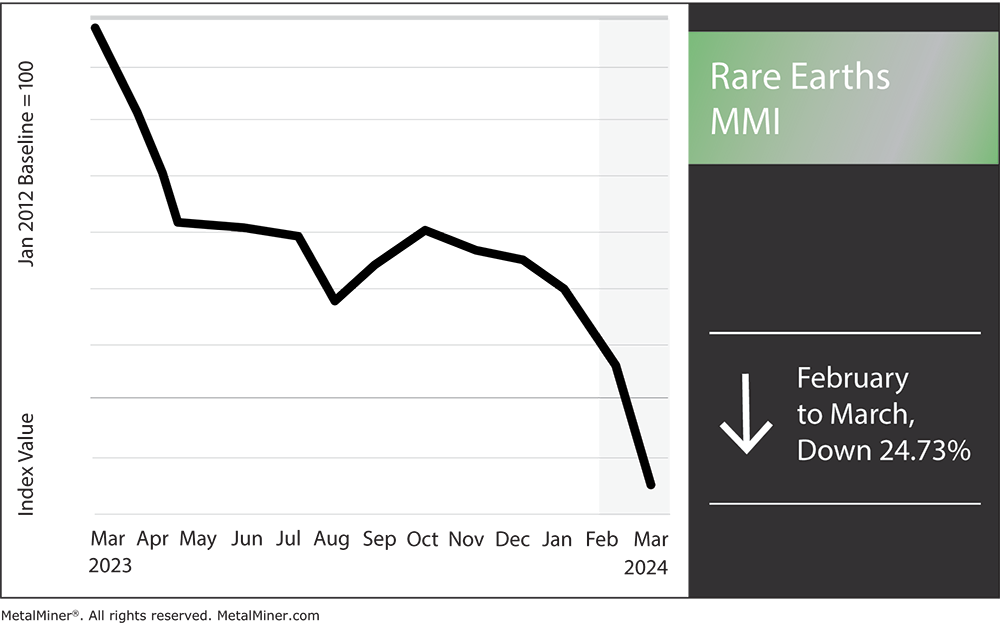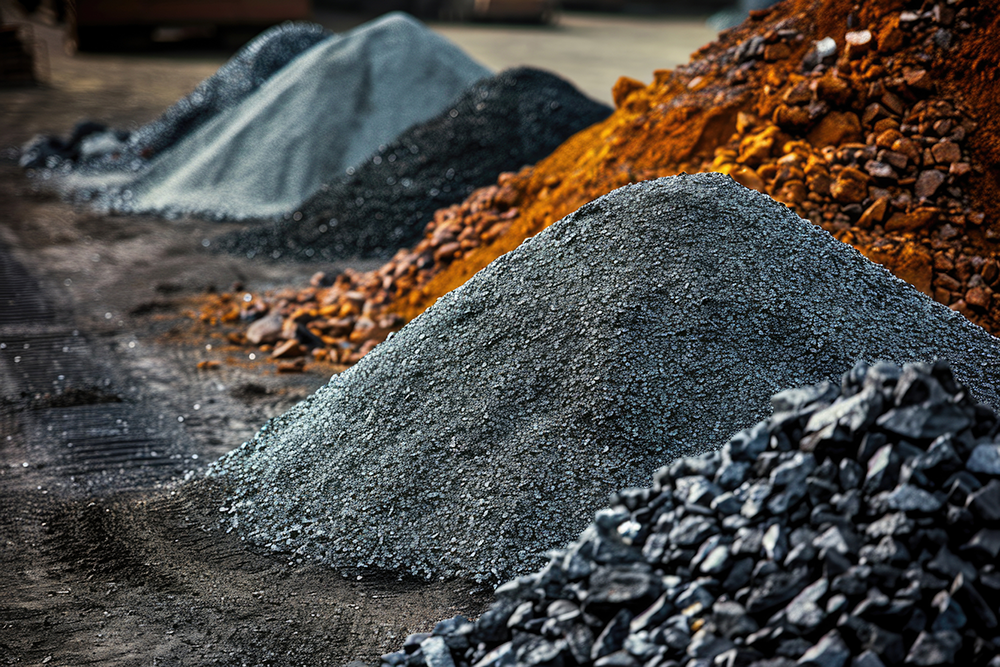The Rare Earths MMI (Monthly Metals Index) experienced a pretty significant drop month-on-month, falling 24.73%. Save for cerium oxide, all components of the index either fell or moved sideways. Weaker than anticipated downstream demand ended up hitting certain metals related to rare earth magnets particularly hard, causing a plummet in the index.
Another significant factor impacting rare earths prices stems from nations continuing to source rare earths outside of China. Experts anticipate that such changes in rare earths production and logistics will continue affecting the index in both the short and long term.
Arm yourself with the rare earth industry’s most robust metal intelligence with MetalMiner Insights, view our full metal catalog.

Could the Wyoming Discovery Rock China’s Rare Earth Dominance?
China’s dominance of the global rare earths market continues to face challenges, and the new discovery of rare earths in Wyoming could intensify a global shift away from Chinese sources. Numerous nations are now undertaking initiatives to lessen their reliance on Chinese rare earth magnets. According to a recent Reuters article,
China has historically been the world’s top producer of rare earths, commanding a substantial share of the global market. However, worries over China’s hegemony continue to compel countries like the U.S. to look into alternate rare earth suppliers.
An article by Yahoo Finance explored the recent Wyoming rare earths find in-depth, highlighting how the new source of rare earth magnets might upend other markets and offer the U.S. a significant advantage. Furthermore, Wyoming Public Media emphasized the possibility of a new mining boom in the Mountain West due to these significant rare earth discoveries.
Is China’s Rare Earth Magnets Bans Working for Them or Against Them?
China’s recent move to ban the export of some rare earth elements and rare earth technology continues to have important ramifications both in and outside of the country. Many experts speculate that China instituted the ban to preserve its worldwide hegemony over rare earths. However, has China ultimately benefited or suffered from this decision?

China’s export prohibition allows China to preserve its competitive edge in this vital market by limiting the export of essential technology used to process and produce rare earth magnets. By preserving access to these vital resources, China can support its efforts to protect its national security interests.
On the other hand, China could suffer due to these export limitations, which can strain trade agreements and political ties with other countries. Export restrictions on rare earth technology may result in trade conflicts and other difficulties with nations that depend on these elements for various industrial applications.
Subscribe to MetalMiner’s weekly newsletter and conquer rare earth market volatility with valuable weekly market insights and macroeconomics.
Mixed Reports About Rare Earth Price Directions in 2024
Thus far, opinions differ on whether the price of rare earths will increase or decrease in 2024. Analysts generally anticipate a resurgence in the second half of the year, which indicates a favorable outlook. Moreover, trends and market research pointing to possible expansion and recovery in the rare earths industry validate this confidence.

On the other hand, opposing viewpoints advise being cautious when projecting the price of rare earths in 2024. Unknowns like geopolitical unrest and economic volatility can still affect rare earth prices, just like any other commodity. When determining the possibility of price swings in the rare earths market, it’s crucial to take into account such factors.
Rare Earths MMI: Noteworthy Price Shifts
Get a competitive edge in challenging rare earth market conditions. Learn game-changing industry insights by opting into MetalMiner’s free weekly newsletter.
- Dysprosium oxide fell by 6.37%, which left prices at $253.60 per kilogram
- Neodymium dropped even further, this time by 9.41%. This left prices at $62392.10 per metric ton
- Praseodymium oxide also dropped in price. After falling by 6.74%, prices sat at $56023.64 per metric ton
- Lastly, terbium metal fell the most out of any of the other rare earth elements, dropping by 13.95%. This left prices at $933.66 per kilogram




